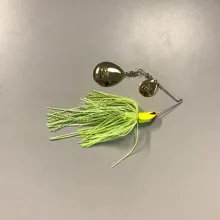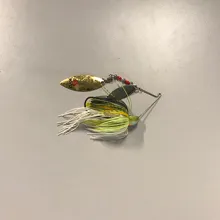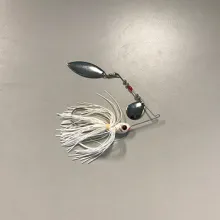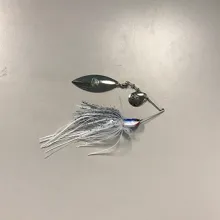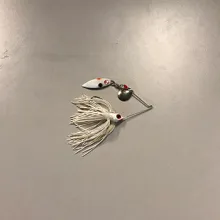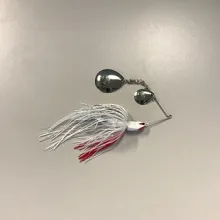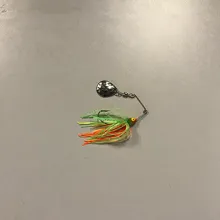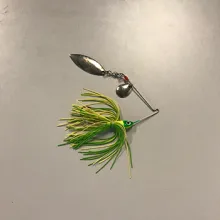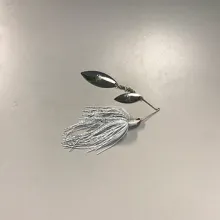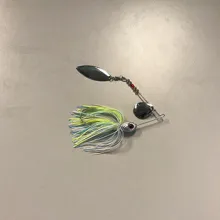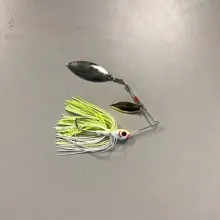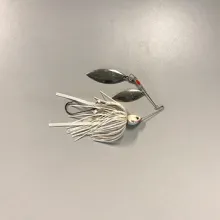Spinnerbaits mimic baitfish by the use of one or more blades attached to the lure, which creates varying degrees of flash and vibration.
Spinnerbaits stimulate a predatory fish's lateral line system, a sensory organ that allows the fish to touch and feel objects at a distance. This sensory organ is what helps fish sense danger or locate prey.
Offset or overhead arm spinners, also known as wire baits, are one of the most recognized lures in fishing.
Popularized by tournament bass anglers, there is no shortage of shapes, sizes and colors for these types of spinning lures.
Unlike inline spinners, the body of an offset spinner does not rotate with the blade(s). The hook body of an offset spinner is molded to the bent overhead arm and blade(s), with a bent angle generally around 90 degrees.
The body of the lure usually has a colored jig-like skirt that surrounds the hook and can be paired with a soft plastic trailer for added effect.
In Oklahoma, offset spinners are generally used to target largemouth and smallmouth bass, but will catch an array of predatory fish.
Offset spinners can be hard to tell apart by color, size or body shape. What makes each lure unique is the style of blade that it uses.
There are four common blades on the market today: the Colorado blade, willowleaf blade, Indiana blade, and Oklahoma blade.
The Colorado blade is a round, spoon-shaped blade, designed for maximum vibration.
The willowleaf blade is long and narrow without a concave side and favors flash over vibration.
The Indiana blade is a hybrid of the Colorado and willowleaf blades, favoring a narrow width with a rounded shape.
The Oklahoma blade is a shortened, rounded variant of the willowleaf blade. For heavily pressured waters, the Oklahoma blade creates a unique signature that is unlike the three more common blade types, and may be more likely to attract attention from predatory fish.
White and chartreuse are the most popular base colors for offset spinners with accents of blue, white, chartreuse and/or red.
